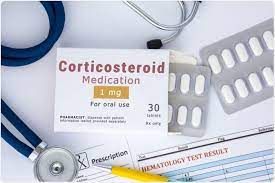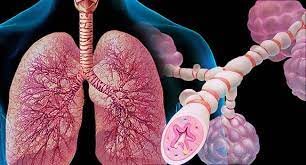Want help to write your Essay or Assignments? Click here
Medical Malpractice – Wrong Medication
Introduction
Medical malpractice in nursing constitute professional negligence which maybe as a result of an act or omission intended, or unintended by a nurse or a care giver where the treatment received falls below the required or accepted standard of nursing practice in medical community and which may result in death or injury to the patient. The most common medical malpractice in nursing is medication errors.
Approximately 1.3 million patients are injured in the US every year as a result of wrong medication (Conrad & Marks, 2016). Medical Error occurs when preventable events that cause or may lead to wrong or inappropriate medication in the control of a patient’s medical condition.
Medication errors make it mandatory for nurses to follow a defined pattern of administering drugs to patients. Following several incidences of nurses administering wrong medication some hospitals allow nurses to administer certain medical procedures and treatment under the supervision of doctors only (Caron, 2011).
Want help to write your Essay or Assignments? Click here
The scrutiny of academic qualification documents and other professional qualification that are required for nursing practice in the US take a longer period to ensure thorough scrutiny of nurses papers and their backgrounds including the institution of training number of years and the experience gained and the hospitals worked in.
The high rate of medication errors has made it very difficult for nurses to serve patients on their own except under supervision in large hospitals.
References
Conrad, M. S. & Marks, J.W. (ed) (2016) The Most Common Medication Errors retried March 21, 2016 from http://www.medicinenet.com/script/main/art.asp?articlekey=55234
The website source from Conrad and Marks (2016) outlines the most common medication errors that are prevalent in the medical spheres. The website defines a wide range of medical malpractices some that originate from the drugs manufacturing companies while others from negligent medical practitioners and care givers including nurses. The source also provides preventive measures that can be applied to reduce medication errors.
Caron, C. (2011) Nurse Gives Patient Paralytic Instead of Antacid, abc news, retrieved March 21, 2016 from http://abcnews.go.com/Health/nurse-patient-paralytic-antacid/story?id=14997244
The article provides the details of medical malpractice concerning a nurse who mistakenly administered a drug to a patient who later died as a result of the drugs complications from and which later turned out to be that are related to other conditions that
Croke et al (2003) Nurses, Negligence and Malpractice, Uppincott Nursing Center eNews, American Journal of Nursing, AJN, September, Volume: 103, Number (Page 54 -57) retrieved March 21, 2016 from http://www.nursingcenter.com/journalarticle?article_id=423284
The article that first appeared on the American Journal of Nursing details and tracks malpractice in Healthcare Organizations. The article defines malpractice as unethical or improper conduct or unexplained lack of skill among professionals which border on negligence or gross incompetency. The article outlines the different kinds of malpractices that nurses experiences in the normal cause of duty.
Aiken, L.H., Clarke, S.P., Sloane, D.M., Sochalski, D.M. and Silber, J.H. (2002)Hospital nurse staffing and patient mortality, nurse burn out, and job dissatisfaction. Journal of the American Medical Association 288(16):1987–93.
The article suggests that the high mortality rates that have been recorded in US health Institution are mostly related to understaffing among the nurses, burnouts and job dissatisfaction.
American Association of Critical-Care Nurses (2005) AACN Standards for Establishing and sustaining healthy work environments.www.aacn.org. American Nurses Association Code of Ethics Project Task Force .A New Code of Ethics for Nurses. American Journal of Nursing 100 (7):69–72.
Want help to write your Essay or Assignments? Click here
This article that was published by AACN outlines the ethics that guide nurses in their stations of work. The malpractices are having a negative effect on Americans.
Treadwell, H.M., and M.R. O. (2003) Poverty, race, and the invisible men, American Journal of Public Health 93:705–7.Veatch, R.M.2003. The Basics of Bioethics, Seconded. Upper Saddle River, NJ: Prentice Hall.
The journal describes the challenges faced by the poor and their quests for treatment and the basis for Bioethnics which refers to the treatment of such issues like abortion and euthanasia.
Volbrecht, R.M. (2002) Nursing Ethics: Communities in Dialogue. Upper Saddle River, NJ: Prentice Hall. Weston,
The book outlines the new nursing standards in the year and compares them to the current changes in medical fraternity including in such areas as bioethical isssues,
Weston, A. (2002) A Practical Companion to Ethics, 2nded. New York: Oxford University Press.
Weston (2002) describes the various practical ways of ensuring that all interdisciplinary ethical standards are all followed and put into practice to the letter.
Mercy, J.A., Krug, E.G. Dahlberg, L.L. and Zwi. A.B. (2003) Violence and health: The United States in a global perspective, American Journal of Public Health 92:256–61.
The Public health journal traces the sources of violence in health care industry and relates the rate of violence in hospitals as associated with inadequate training, lack of dedication and discipline.
Milio, N. (2002) Where policy hits the pavement: Contemporary issues in Communities, In Policy and Politics in Nursing and Health Care, 4th ed., pp. 659–68.St.Louis, MO: Saunders.
The article describes the difficult situations that the nursing industry has been exposed to and the current challenges facing the situation.
Want help to write your Essay or Assignments? Click here









